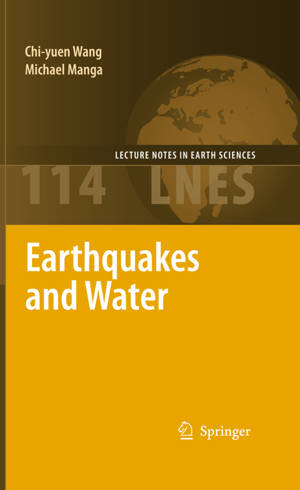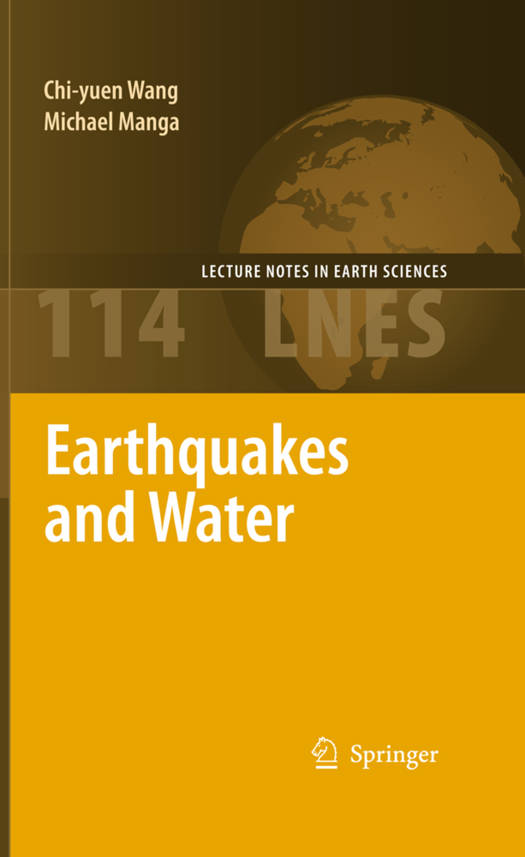
- Afhalen na 1 uur in een winkel met voorraad
- Gratis thuislevering in België vanaf € 30
- Ruim aanbod met 7 miljoen producten
- Afhalen na 1 uur in een winkel met voorraad
- Gratis thuislevering in België vanaf € 30
- Ruim aanbod met 7 miljoen producten
Zoeken
Omschrijving
Distantearthquakesarewellknowntoinduceawiderangeofresponsesinsurface water and groundwater. These responses are often viewed as mere curiositiesas theiroccurrenceislimitedinspaceandtime.Thefrequentemphasisonearthquake precursorsinstudiesofthesephenomenaalsotendstopushthestudyof'earthquake hydrology' away from the mainstream of geoscience. The observed phenomena, however, probetheinteractionbetweenhydrogeologicalprocessesandmechanical deformationintheshallowcrust.Hencetheyprovideinsightintotheinteraction among water cycle, tectonics, and properties of the crust. As such, the study of earthquakehydrologyalsohasthepotentialtoprovideamorequantitativeand- depthunderstandingofthenatureofearthquakeprecursorsandevaluatewhether theyareinfactprecursors. The title of this book re ects the nature of the connections we address: we focus on how earthquakes affect hydrology. Water also in uences earthquakes as it affects the strength of faults and the rheology of rocks. Our emphasis here, however, is not on the hydrology of earthquakes, but on understanding the hydrological phenomena induced or modi ed by earthquakes. The boundary betweenthe'hydrologyofearthquakes'andthe'earthquake-inducedhydrological phenomena', however, can sometimes be blurred. For example, triggered ear- quakes are sometimes explained by a re-distribution of pore pressure following the triggering earthquake. Hence, triggered seismicity may be an example of an earthquake-induced hydrological phenomenon. Thestudyofthelatter, therefore, canbeimportanttowardsabetterunderstandingofthemechanicsofatleastsome earthquakes. Therearemanystudents, postdocsandcolleagueswewishtothankforcolla- ratingonresearchprojectsrelatedtothetopicsreviewedinthisbook, orparticip- inginstimulatingdiscussionsintheclasswetaughtcalled'Earthquakehydrology'. In particular, we wish to thank Emily Brodsky, Yeeping Chia, Douglas Dreger, Shemin Ge, Fu-qiong Huang, Tom Holzer, Chris Huber, Joel Rowland, Martin Saar, Yaolin Shi, Chung-Ho Wang, Kelin Wang, Pei-ling Wang and Alex Wong forenlighteningexchanges.HunterPhilsonhelpedwith guresandtheindex.We v vi Preface alsothanktheNationalScienceFoundation, theMillerInstituteforBasicResearch inScience, andNASAforsupportingtheresearchandsynthesisinthisvolume.
Specificaties
Betrokkenen
- Auteur(s):
- Uitgeverij:
Inhoud
- Aantal bladzijden:
- 225
- Taal:
- Engels
- Reeks:
- Reeksnummer:
- nr. 114
Eigenschappen
- Productcode (EAN):
- 9783642008092
- Verschijningsdatum:
- 21/06/2010
- Uitvoering:
- Hardcover
- Formaat:
- Ongenaaid / garenloos gebonden
- Afmetingen:
- 155 mm x 236 mm
- Gewicht:
- 476 g

Alleen bij Standaard Boekhandel
+ 363 punten op je klantenkaart van Standaard Boekhandel
Beoordelingen
We publiceren alleen reviews die voldoen aan de voorwaarden voor reviews. Bekijk onze voorwaarden voor reviews.







